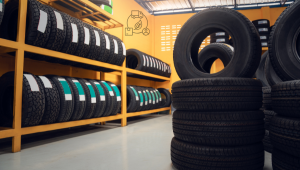Program Overview
This program provides a comprehensive overview of advanced materials used in aerospace applications, including high-performance metals, superalloys, composites, and emerging smart materials. Delivered by a seasoned industry expert, the course helps participants understand material selection strategies based on strength, weight, temperature resistance, and cost. Real-life case studies from aircraft structures and propulsion systems highlight how material innovation influences reliability, safety, and fuel efficiency. The course also explores trends such as TiAl, Al-Li alloys, and nanocomposites, while addressing manufacturability, lifecycle cost, and regulatory compliance. Simulations and practical exercises empower participants to solve design-material-performance trade-offs in real-world aerospace contexts.
Features
- Evaluate and select aerospace materials based on application, performance, and environment
- Apply advanced composites and alloys in structural and engine components
- Understand the trade-offs in cost, machinability, and lifecycle performance
- Stay updated on future trends like nanomaterials, smart alloys, and additive-ready materials
Target audiences
- Aerospace Design Engineers
- R&D Professionals and Materials Scientists
- Manufacturing Engineers
- Program Managers
Curriculum
- 8 Sections
- 40 Lessons
- 2 Days
- Aerospace Material Classification & Selection Parameters5
- 1.1Pure metals, alloys, ceramics, polymers, composites
- 1.2Selection parameters: Shape, mechanical needs, service temp, availability, cost
- 1.3Differences in structural vs. engine vs. interior material choices
- 1.4Why Ti is used for engine blades but not skin panels
- 1.5Interactive Activity: Material Selection Matrix: Rank materials for a sample airframe component
- Metallics in Aerospace: Aluminum, Steel & Titanium5
- 2.1Aluminum: Alloys like 7075, corrosion resistance, usage in fuselage, wings
- 2.2Steel: High strength, use in landing gear and hinges, high heat areas
- 2.3Titanium: Use in fans, housings, landing gear; cost vs. benefit
- 2.4Insight: Transition from aluminum-heavy to Ti-integrated aircraft (Boeing 787, Airbus A350)
- 2.5Property Comparison Activity: Evaluate trade-offs between Al, Ti, and Steel
- Nickel Alloys & Superalloys for Jet Engines5
- 3.1Creep resistance, corrosion performance, high-temp oxidation resistance
- 3.2Application in turbine blades, exhaust, valves
- 3.3Need for materials that perform at 2000°C in lean-burn engines
- 3.4Example: Inconel in turbine discs; Hastelloy in exhaust ducting
- 3.5Alloy Matching Exercise: Assign materials to engine zones based on temperature/load
- Evolution of Material Usage – From Aluminum to Composites4
- Composite Materials in Aerospace5
- 5.1CFRP, GFRP, MMC, Hybrid composites
- 5.2Role in paneling, wingboxes, control surfaces
- 5.3Processing & Challenges: Autoclave curing, defect inspection, repairability
- 5.4Application: Boeing 787 fuselage section made of one-piece CFRP barrel
- 5.5Simulation Exercise: Design Task: Pick composite materials for 3 aircraft subsystems
- Polymers, Ceramics & Rubber – Support Materials5
- Today & Future: Smart Materials, Nano-Composites, TiAl, Al-Li7
- 7.1Graphene, Nano composites: high strength, conductivity
- 7.2Graphene, Nano composites: high strength, conductivity
- 7.3Al-Li for ultra-light fuselage panels
- 7.4Smart materials – shape memory alloys
- 7.5Additive manufacturing for aerospace-grade Ti
- 7.6Challenges in machining advanced alloys
- 7.7Group Exercise: Design a lightweight, thermally resistant part for a hypersonic UAV
- Design for Manufacturability (DFM) in Aerospace Materials4







